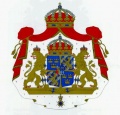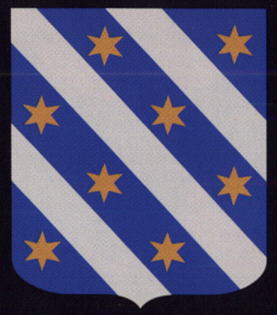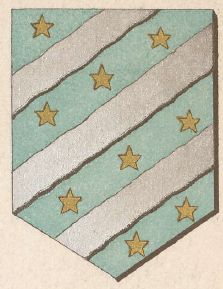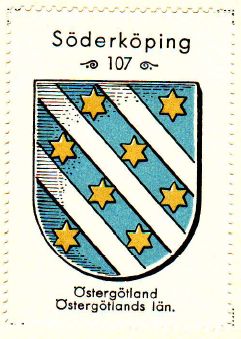Söderköping
Sweden heraldry portal
This page is part of the Sweden heraldry portal |
Heraldry of the World |
|
Civic heraldry:
|
Other heraldry: |
SÖDERKÖPING
Province (Landskap): Östergötland
County (Län): Östergötlands län
Additions : 1952 Drothem, Skönberga; 1971 Aspveden (1952 Gårdeby , Västra Husby, Östra Ryd); 1974 Stegeborg (1952 Börrum, Mogata, Sankt Anna, Skällvik)
| Swedish |
I blått fält tre balkar av silver, åtföljda av åtta sexuddiga stjärnor av guld ordnade 1.3.3.1|- |
English | blazon wanted |
Origin/meaning
The arms were officially granted in 1946.
The arms are based on the secret seal of the town known from the 1430s. The oldest seal, known since 1290, showed a lion. The origin is not very clear. The lion in the oldest seal is probably taken from the arms of the Folkungar dynasty, Kings of Sweden at the time. The wavy bends may have been the background of the seal (see f.e. Göteborg) and due to the smaller size of the seal, the lion was omitted. Whether the original seals showed stars or hearts is not clear. During the centuries the city arms have also been shown with a lion as a supporter.
A later, early 20th century, theory stated that the arms simply show the many rivers in the area and the stars represent the different parishes. This has no historical significance.
| The seal from 1290. | |
| The arms as shown by Liljeblad, 1878 |
The arms in the Kaffe Hag album +/- 1935 |
Contact and Support
Partners:
Your logo here ?
Contact us
© since 1995, Heraldry of the World, Ralf Hartemink 
Index of the site
Literature: Nevéus and de Waern, 1992















